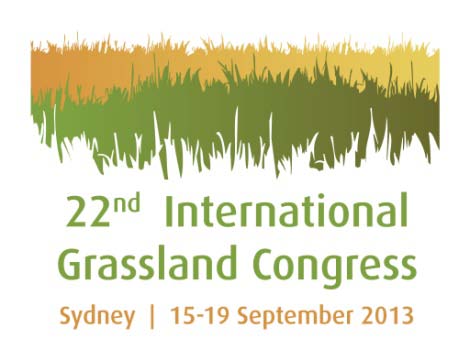In a novel partnership between the US Department of Agriculture-Agriculture Research Service (USDA-ARS), The Nature Conservancy (TNC) and Aquatrols Corporation of America, new reseeding tools have been developed that could see more successful restoration of rangelands that protect wildlife habitat, support local ranchlands and decrease likelihood of severe wildfires.
This was the good news reported by Dr Matthew Madsen from the USDA-ARS, speaking at the 22nd International Grassland Congress in Sydney on 15-19 September 2013 – a global forum being attended by 1,000 delegates from over 60 countries.

“Often the only means of restoring these lands involves reseeding desirable species. Unfortunately, the success of these seeding efforts is typically less than desirable, especially in arid and semi-arid ecosystems.”
Dr Madsen reported on a plan for improving rangeland reseeding success in the sagebrush steppe ecosystem of western North America.
“Our research is focused on producing cost-effective seed enhancement technologies that are designed to mitigate identified barriers to plant establishment for the site and time the seed is sown.”
He reported the newly developed seed enhancement technologies address many of the issues faced by increasing soil water availability, improving seedling emergence, enhancing plantability, controlling the timing of seed germination, and lowering competition from weeds by improving the selectivity of preemergent herbicides.
“These seed enhancement technologies diverge from the common methods employed in the seed industry and provide new conceptual ideas for improving rangeland seeding success.
“If this pioneering strategy works, rangelands could be more successfully restored—protecting wildlife habitat, supporting local ranchlands, and decreasing likelihood of severe wildfires,” he reported.
“Ourinnovative seed technologies may be highly beneficial for restoration efforts on rangelands beyond the US. This technology could give land managers across the globe a new set of tools for restoring and maintaining the economic resources, ecosystem services and cultural values they derive from their rangelands,” says Jay Kerby, a rangeland ecologist with TNC.
“Successful application of our restoration approach to other biomes will require research to understand the causes of seedling mortality in those biomes.Once the limitations have been identified, seed enhancement formulations can be developed to overcome specific limitations”, according to Dr Tony Svejcar with the USDA-ARS.



Comments are closed.